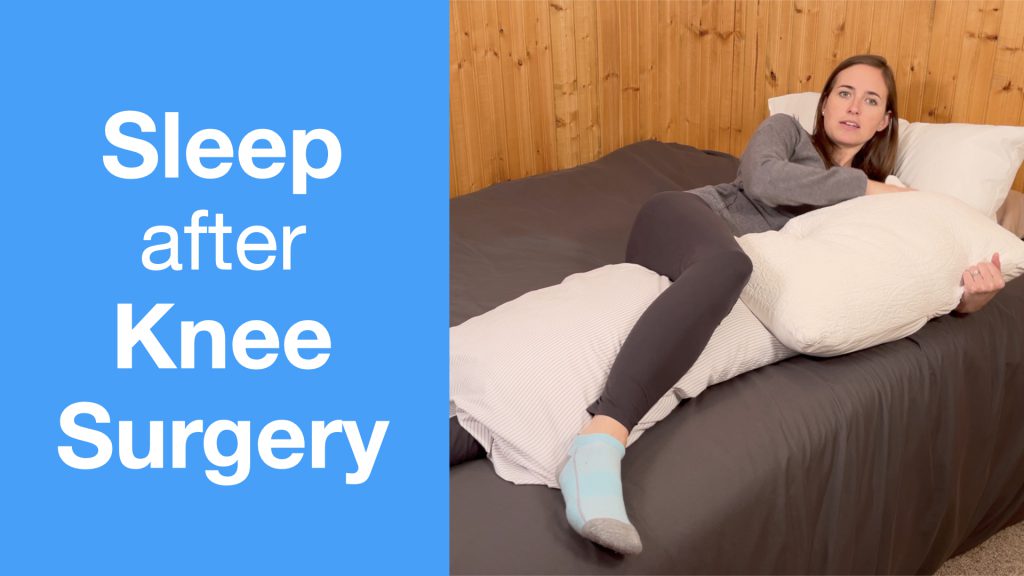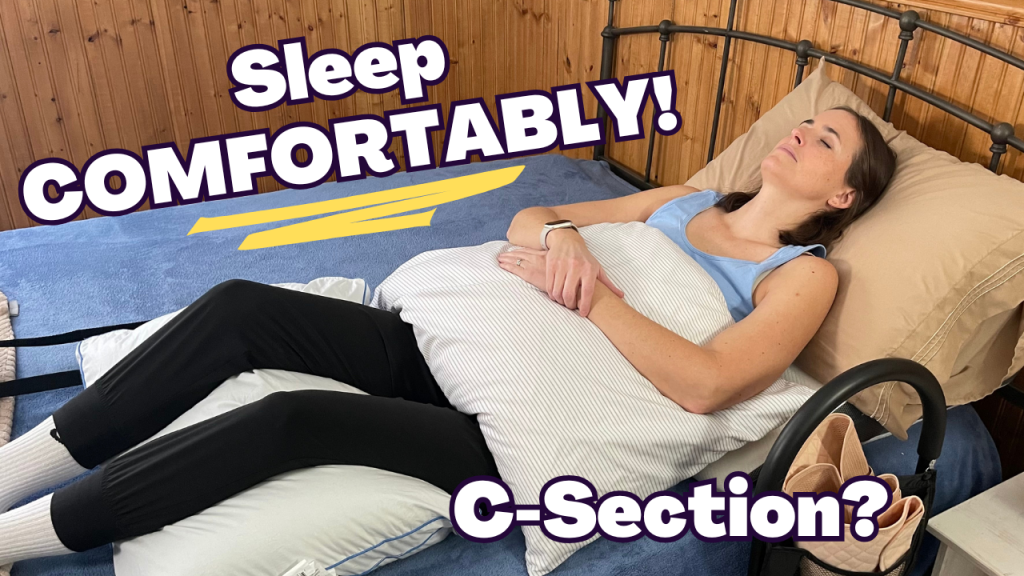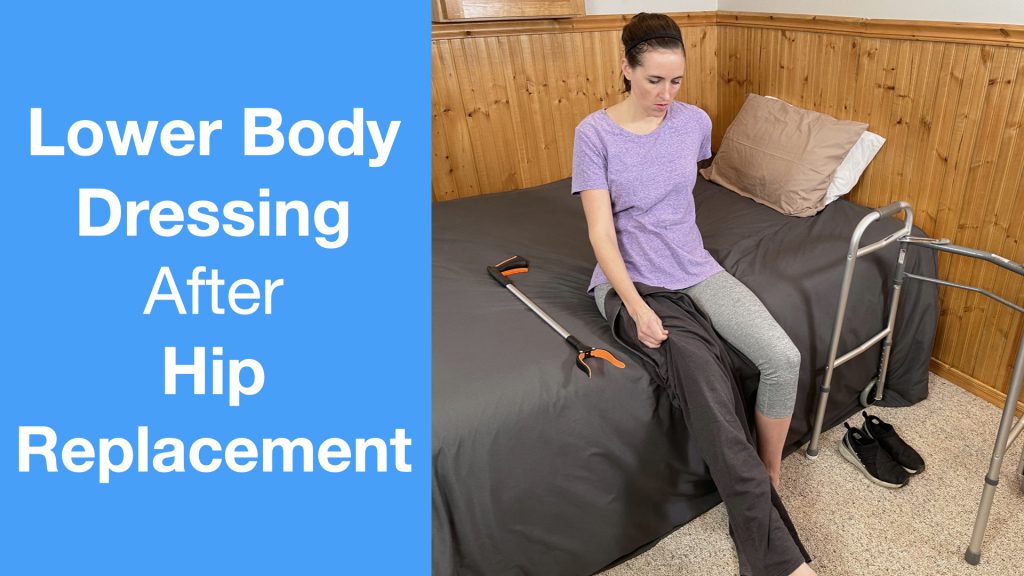Not sure how to sleep after knee surgery? Currently struggling to sleep after knee surgery? Maybe you are a partner of someone recovering from knee surgery who can’t sleep? Or maybe you have a knee surgery coming up and want to learn?
Knee surgery recovery can be complicated, but sleeping after knee surgery doesn’t have to be.
Everyone knows the importance of sleep. You might already even know that sleep is even more important when you are recovering from a surgery.
Learning how to sleep after knee surgery is therefore paramount to helping to have a fast recovery.
This post will provide details on how to safely and comfortably position in bed for rest and sleep following a knee surgery, replacement or injury. Equipment, positioning recommendations, and safe technique are all clarified in this post.
If you would like to see this content in a video, please check out the video below and my YouTube channel EquipMeOT.
Overview
We’ll go over a few different sleep position options as well as other considerations for making the bed as comfortable and easy to access as possible. We’re going to talk about positioning yourself to get comfortable for rest following a knee replacement or similar surgical procedure.
- Consider Equipment
- What To Do First
- What Is the Best Position to Sleep in After Knee Surgery?
- Sleeping on Your Back After Knee Surgery
- How Can I Elevate My Knee While Sleeping?
- Can I Sleep on My Side After Knee Surgery?
Please note: Before we begin, you need to make sure you follow all the instructions and warnings provided by the manufacturer. The steps below are only to provide guidance with installing or assembling equipment, but you should always follow the warnings and instructions provided by the manufacturer and always speak with your medical team before adding new equipment to your routine.
Consider Equipment for Sleeping After Knee Surgery
There are a few pieces of equipment that you should consider utilizing in order to help you feel comfortable in bed while you sleep after knee surgery. Adaptive equipment like a step stool or bed rail can assist with getting in and out of bed, while a positional wedge can help with finding a comfortable resting position. None of this equipment is required, but I recommend you take a look at them to identify if any of them would help you in your situation.
Step Stool with Handle
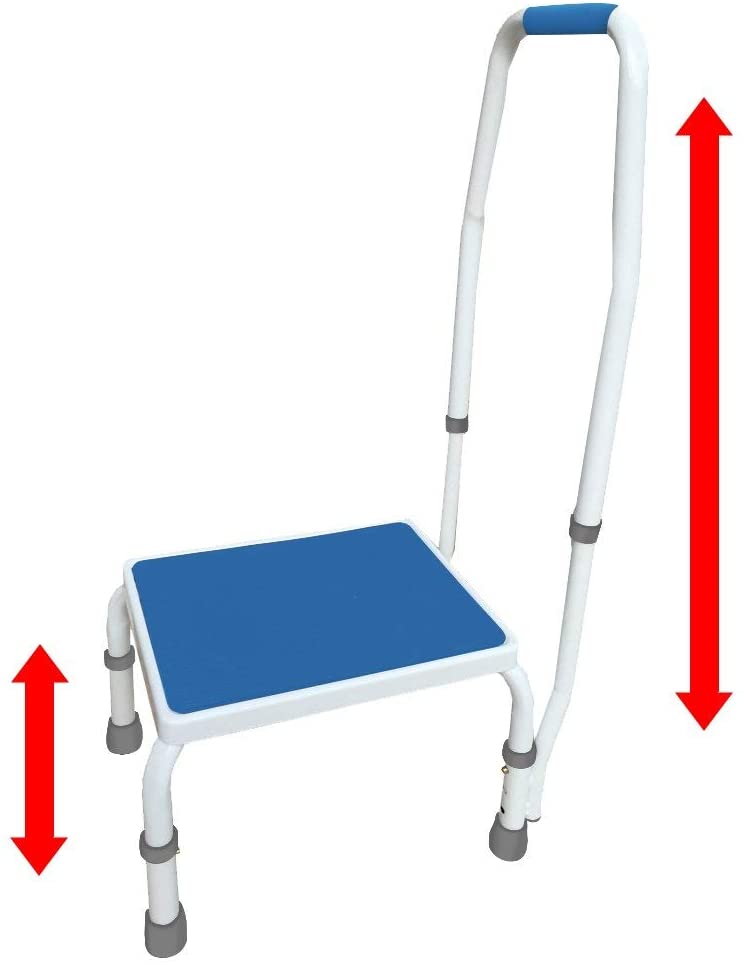
Bed Rail
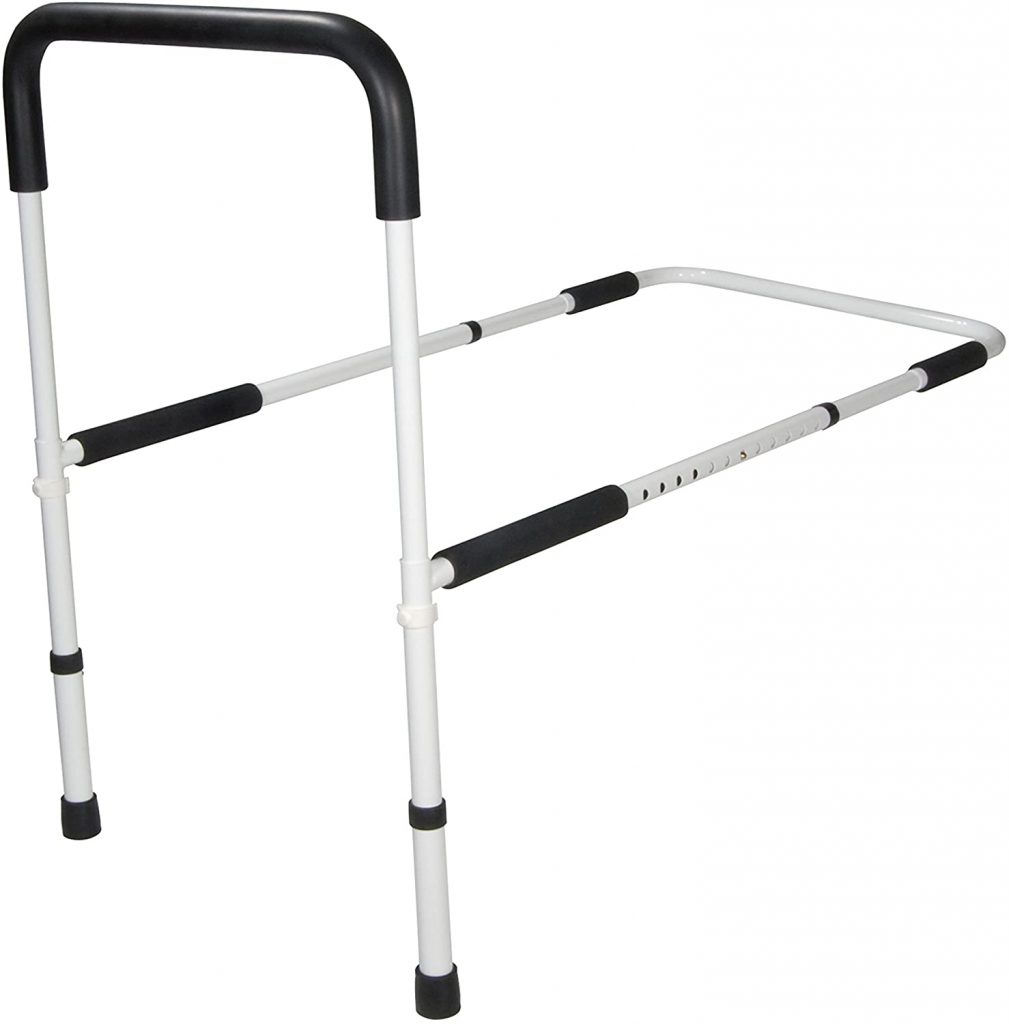
Wedge
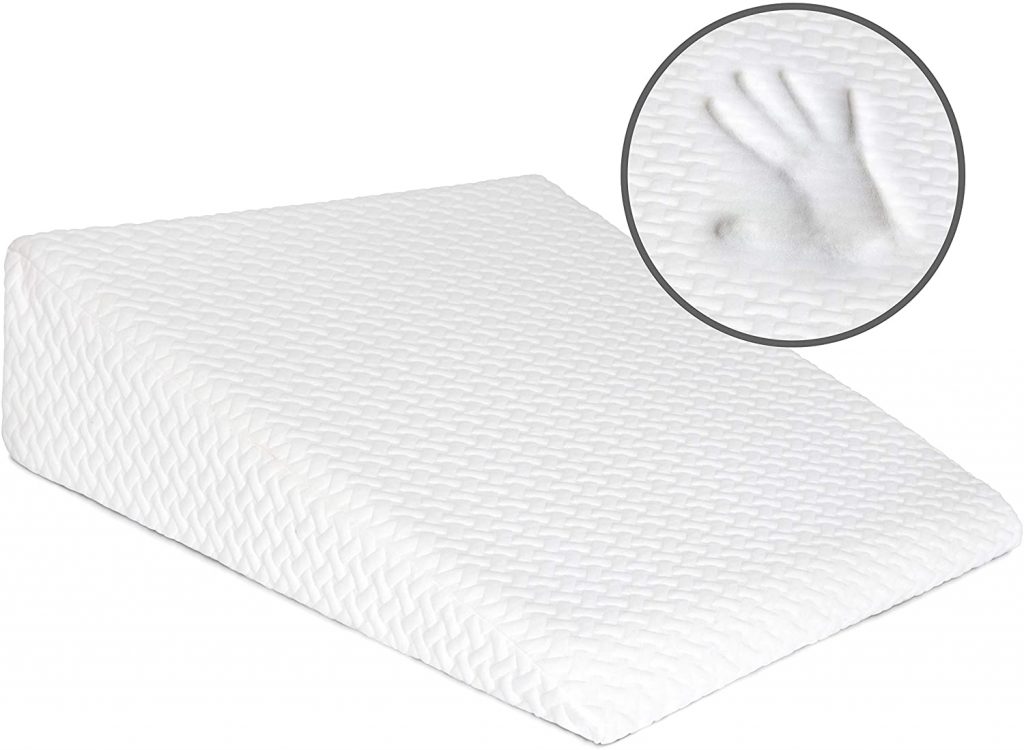
What to Do First for Help with Sleep
The first aspect is to consider the layout and bed situation you’re dealing with. Higher beds may require a step stool to get into. Getting into and out of a lower bed may require a bed rail, or security pole to help with standing after waking.
Of course, if you are having surgery, preparing your bed prior to surgery while you have time to order products or modify your bed is always best. As soon as you know you need surgery, you should begin preparing to recover. You may need a variety of pillows or support pieces. A variety of thicknesses, firmness, etc. will help you get more comfortable quicker.
What is the Best Position to Sleep in After Back Surgery?
The best position for sleeping after knee surgery is on your back. Sleeping on your back after knee surgery will more easily allow you to elevate your leg or knee which will help with swelling management.
Let’s talk about how you can sleep on your back after knee surgery.
Sleeping on Your Back After Knee Surgery
When laying on your back, the first item to start with will be a thin pillow behind the head. Having a pillow behind your head will help with shoulder positioning and neck support. I always keep a couple extra pillows nearby to help place extra support when I get my injured knee into the bed.
As I’ve demonstrated in other videos and posts, getting into bed can be difficult. It is important to sit first and rotate gently while supporting the leg.
It is generally encouraged, once your leg is in bed, to straighten the leg as much as is comfortable. To rest or sleep, we’ll want to encourage that leg to straighten, but not force it to be straight. This means the location of the pillow you place under the knee is vital.
The pillow should be placed under the calf with the top edge of the pillow just meeting the bottom of the knee. Positioning the pillow under the ankle can cause more stress on the knee. This positioning may be helpful for therapy, but is not conducive to rest. As such, positioning a pillow directly under the knee is not recommended.
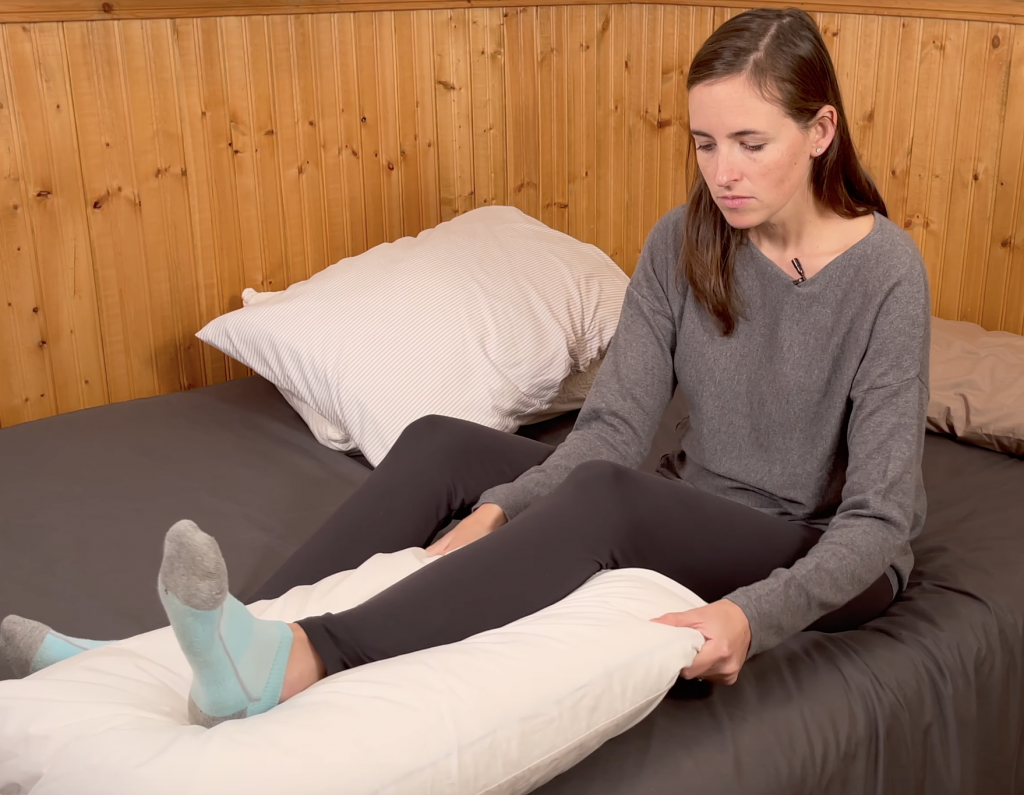
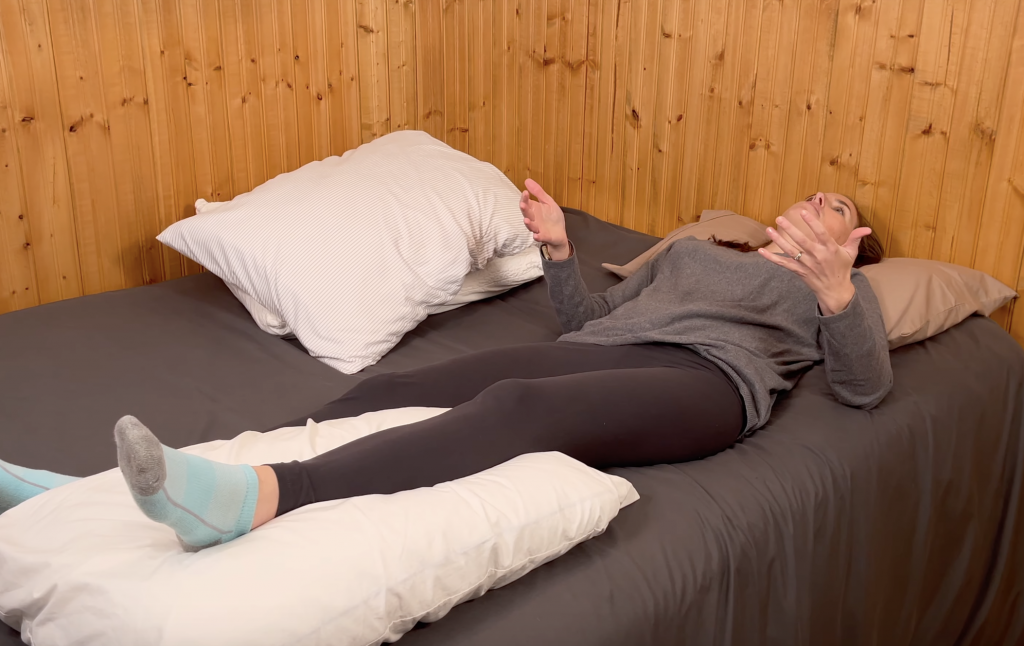
How Can I Elevate My Knee While Sleeping?
First, elevating your knee for long periods of time is not recommended. Elevating your knee for short periods of time can help with swelling, but shouldn’t be done for sleeping.
Two pillows, or a wedge-shaped foam block, will under your calf will often provide an elevated position for the knee. Raising your leg above your heart while lying on you back will aid in swelling. Remember to place the pillow under the calf.
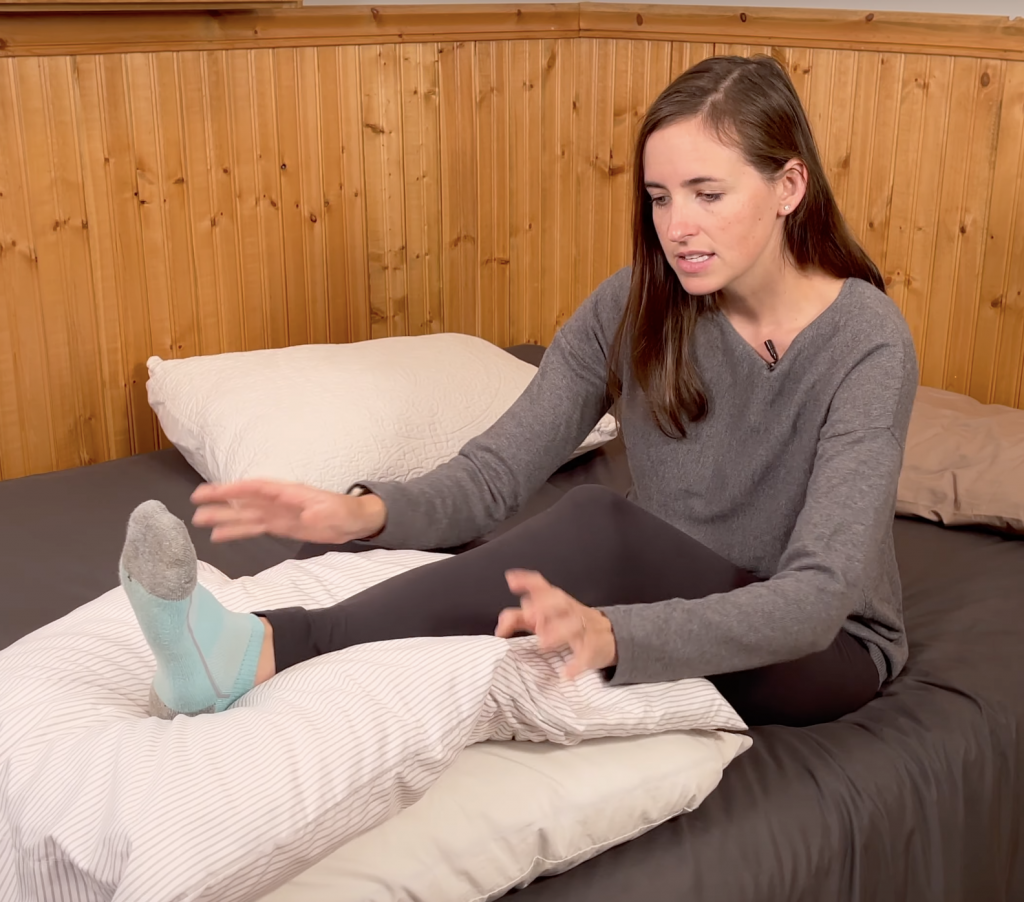
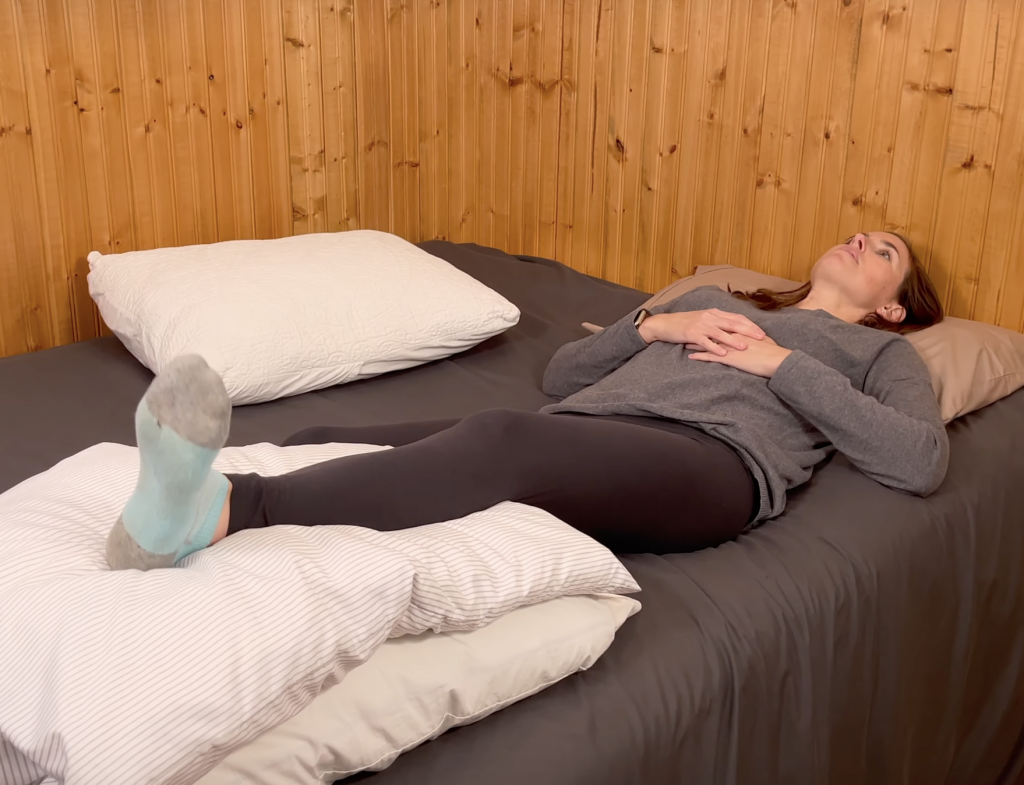
If the pillows are not stable enough, or you need to raise the foot and ankle region higher, a wedge shaped foam block can also help. The tall edge of the wedge would be placed by the heel and support pillows would be used under the calf, knee, and hip area to prevent undue knee extension. Again, we wouldn’t recommend this position for a full nights rest, but it can greatly aid in reducing swelling.
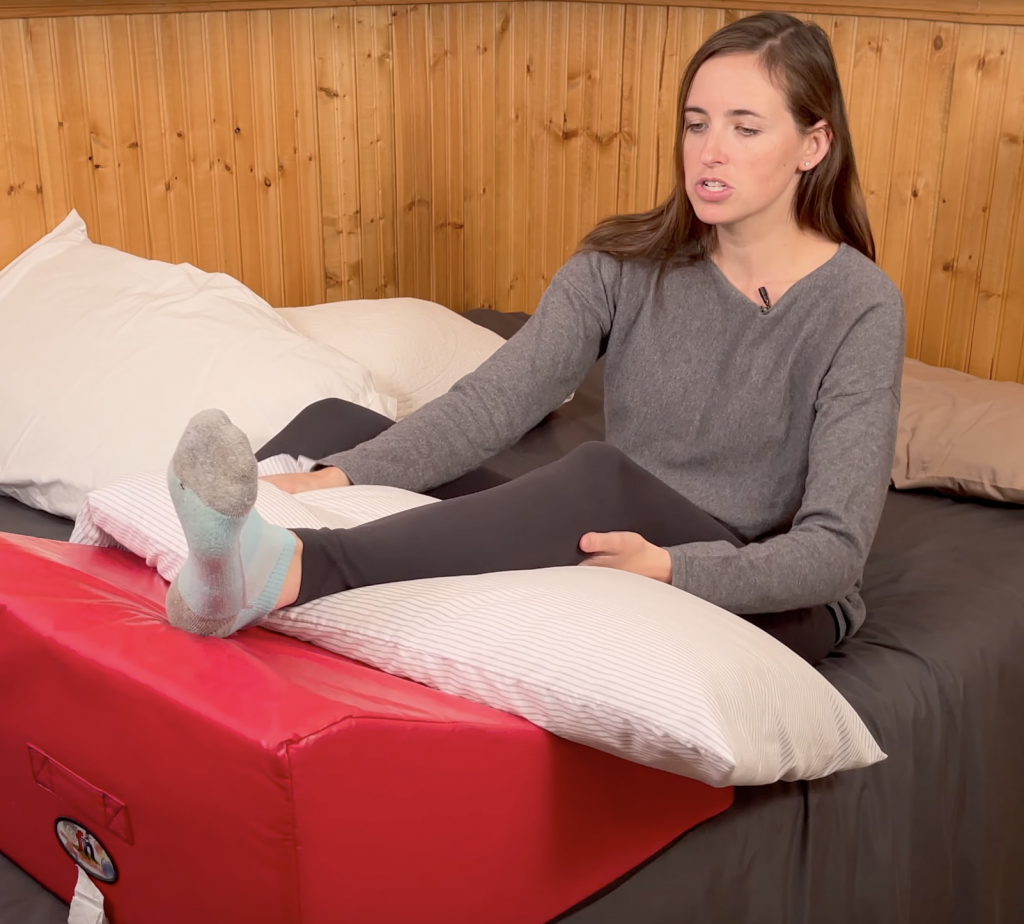
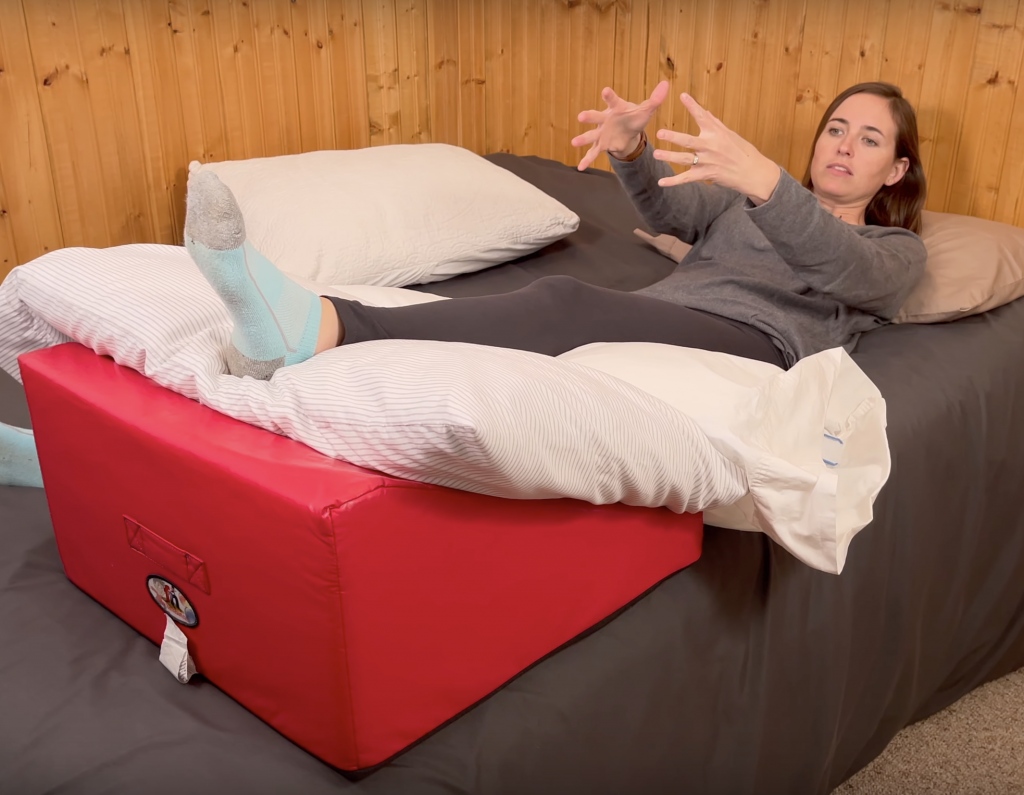
Can I Sleep on My Side After Knee Surgery?
Yes! Side sleeping is the most common position to sleep comfortably to recover from knee injuries. Again, the most recommended position is on your back. When sleeping on your side, you’ll need thicker pillow under your head than would be necessary for back sleeping to help with neck positioning. Again, some extra pillows to help support once you’re in position are helpful.
To get into a side sleeping position, you’ll rotate your hips to have your injured knee closest to the bed and laying as flat to the bed as possible.
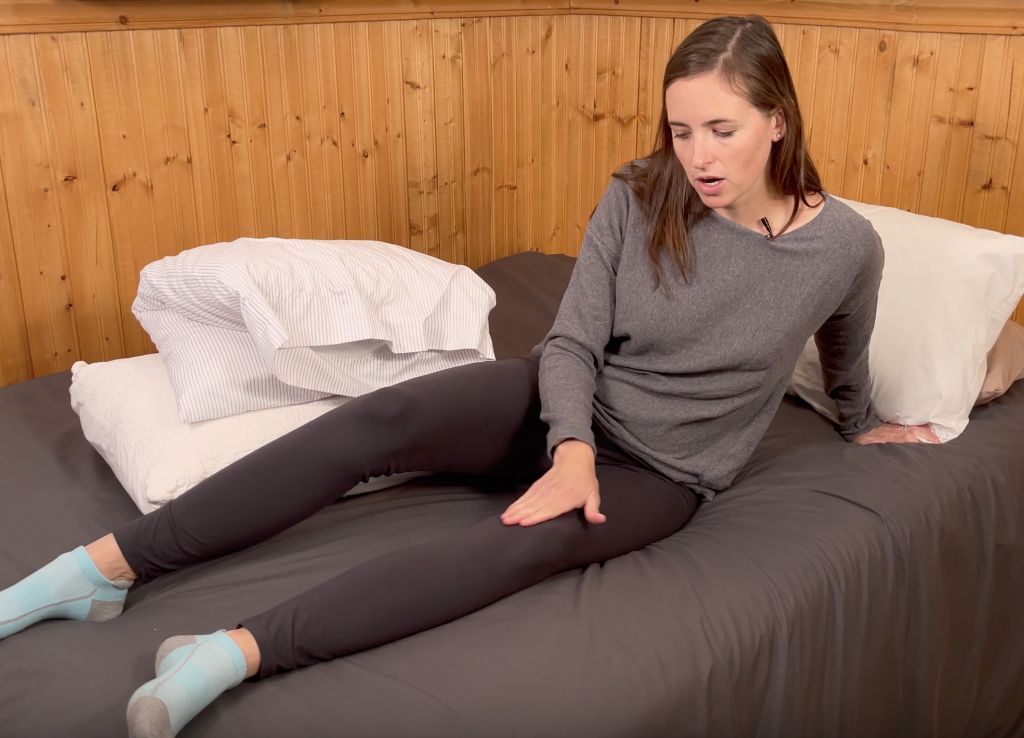
It’s best to not place your non-injured leg directly on top of the repaired knee without anything in between. You should place a pillow between your legs to spread the pressure of your top leg over the whole lower leg.
Now that you have a pillow, there are two positions you can place your non-injured knee on your repaired or injured knee and these are based solely on what you feel most comfortable with.
The first position is laying your non-injured knee directly above the injured knee. Some people feel the added weight of the non-injured knee can make rest for the injured knee better.
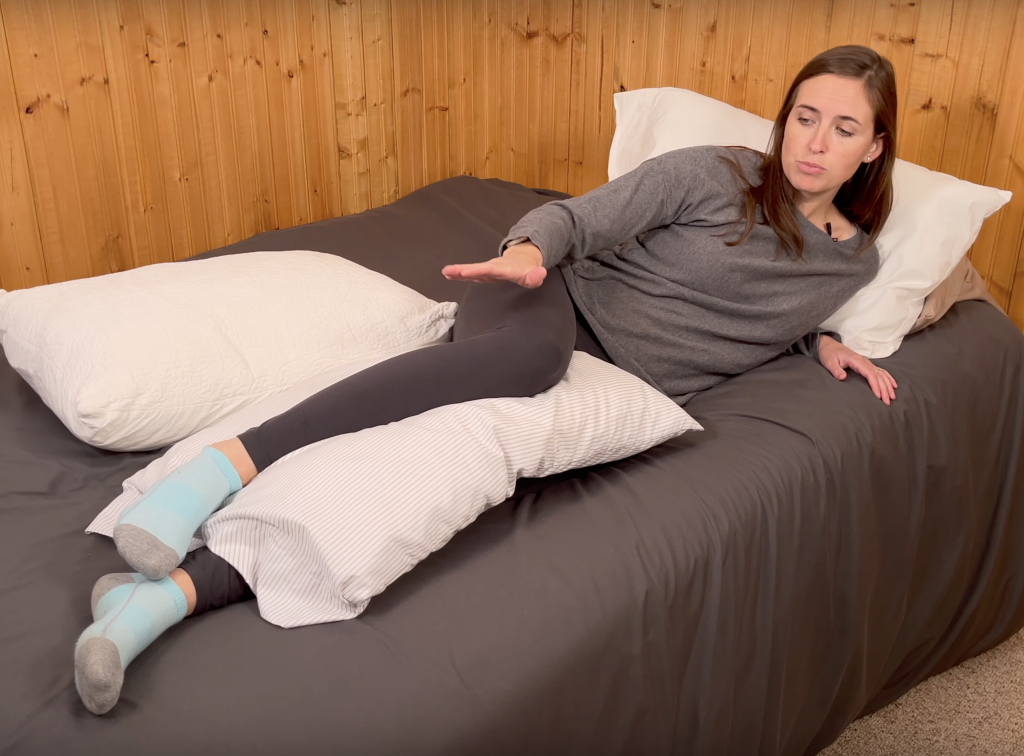
The second is to position your non-injured knee slightly forward, so it is not laying directly above the injured knee.
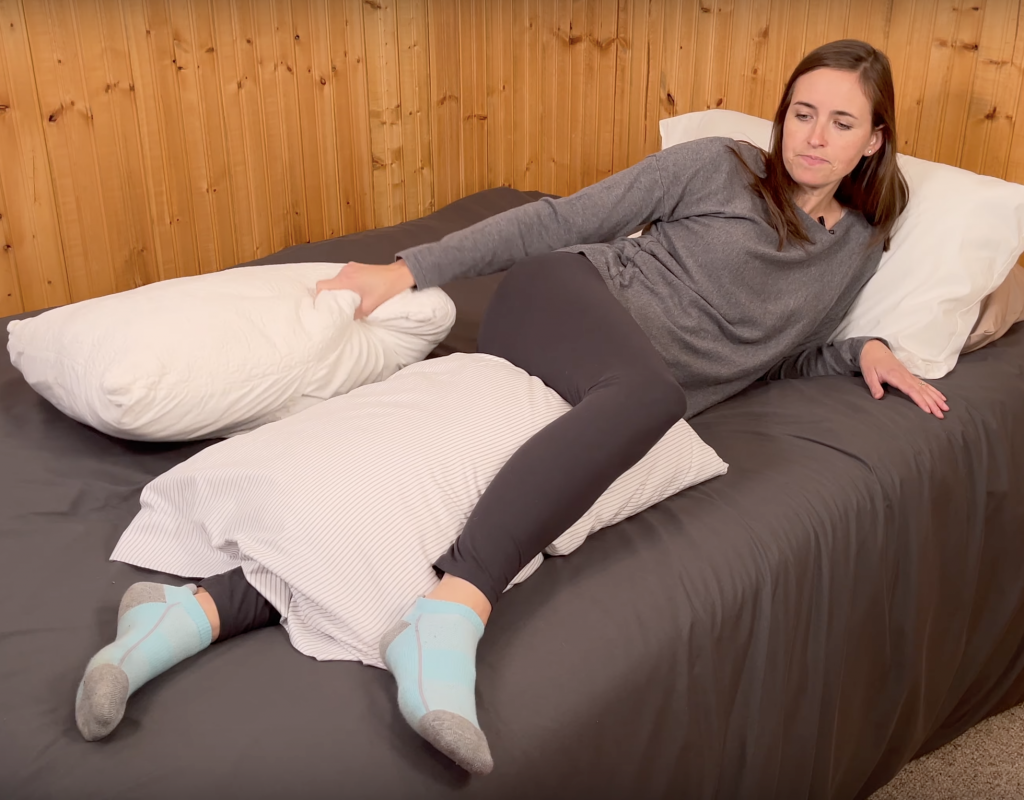
Both positions, with a pillow between the legs, and the top leg either a bit behind or a bit forward of the injured leg seems to be the most comfortable sleeping position after a surgery. You can add an additional pillow to provide support in preventing you from rolling onto your stomach at night.
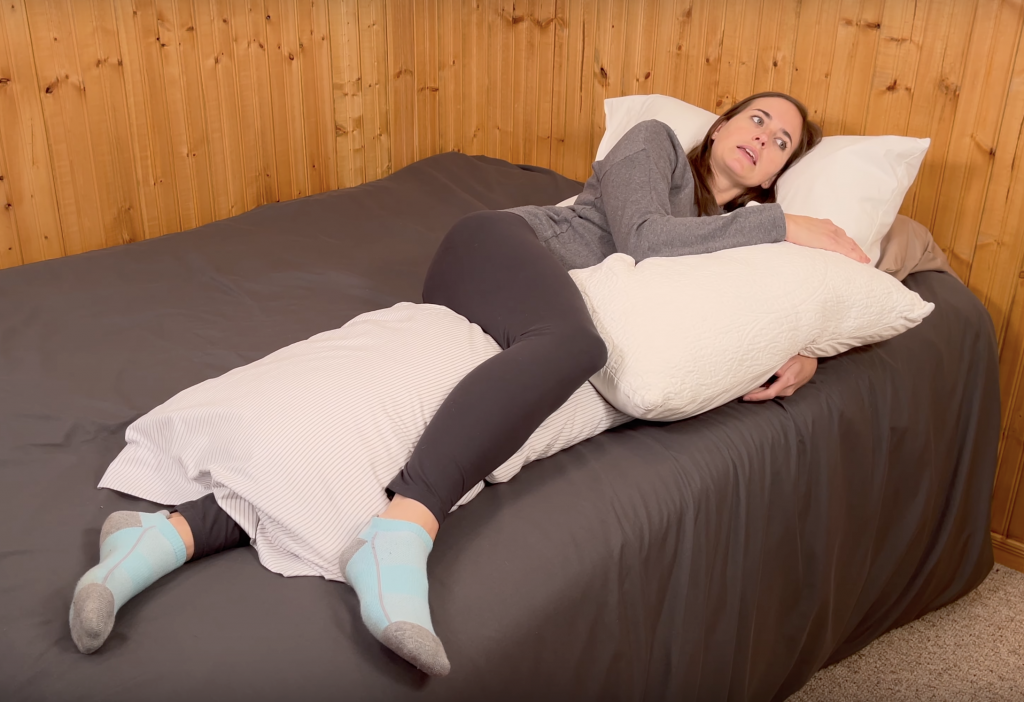
It is important early on in the recovery process to find a comfortable position to rest and heal after a surgical procedure. You’ll want to increase flexibility and mobility as much as you can during the recovery process and being rested without stressing the leg too much during rest is a key component in that recovery.
*all prices are at the time of publishing
Note: This post contains affiliate links that provide a small commission without any added cost to the user.
- How to Sleep After a C-Section or Abdominal SurgeryRecovering from a C-Section, appendectomy, abdominoplasty, or other abdominal surgery can feel overwhelming, especially when it comes to something as essential as sleep. With a tender incision and limited mobility, finding a comfortable position may seem impossible—and yet, proper rest is critical for healing! In this …
How to Sleep After a C-Section or Abdominal Surgery Read More »
- How to Get In and Out of the Car after Hip ReplacementGetting in and out of a car after a hip replacement can feel like navigating an obstacle course. Ensuring you move safely and avoid unnecessary strain on your healing hip is essential for a smooth recovery. Whether you’re heading to a follow-up appointment or simply enjoying …
How to Get In and Out of the Car after Hip Replacement Read More »
- A Complete Guide to Lower Body Dressing After Hip Replacement SurgeryRecovering from hip replacement surgery (or similar traumatic injury) comes with its challenges, especially when it comes to everyday tasks like getting dressed. While your mobility may be temporarily limited, dressing your lower body can be made much easier with the right strategies and tools. This …
A Complete Guide to Lower Body Dressing After Hip Replacement Surgery Read More »
